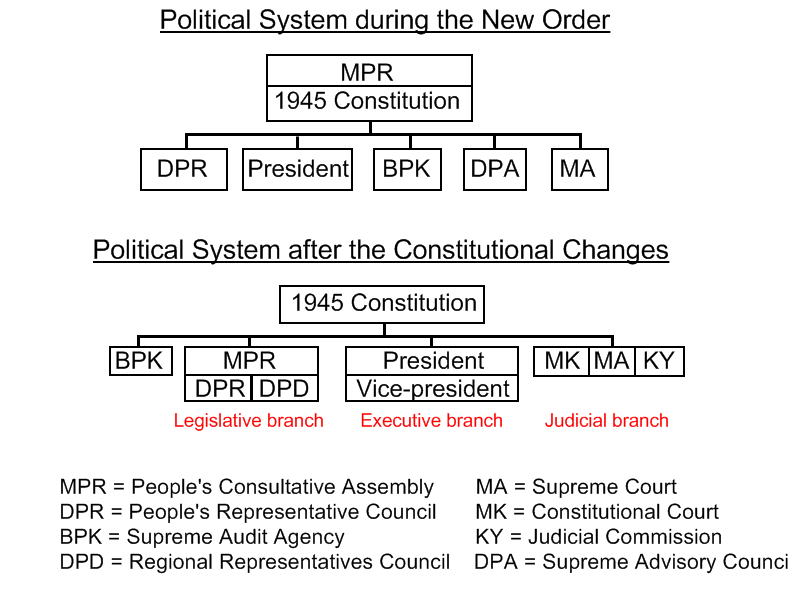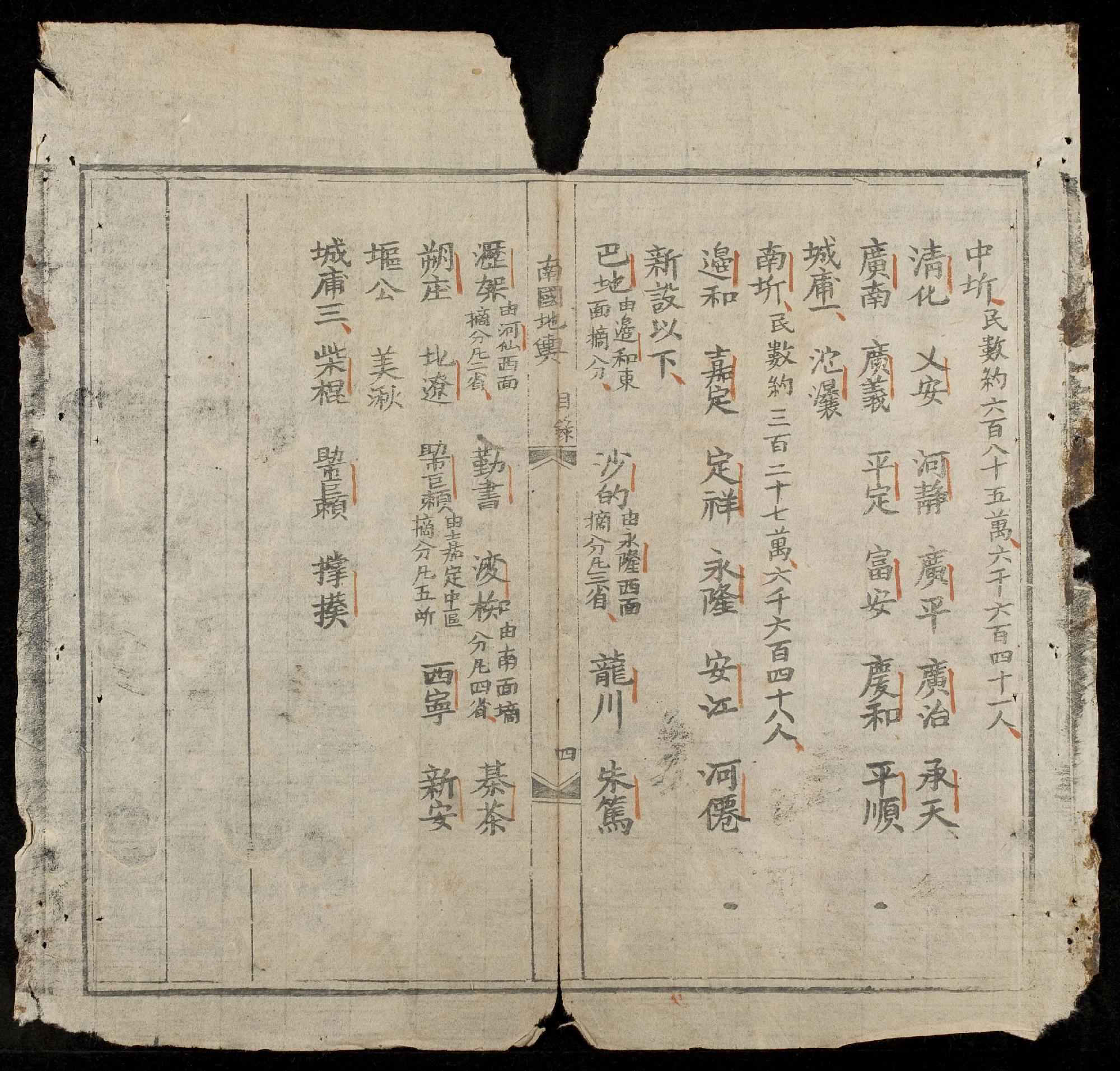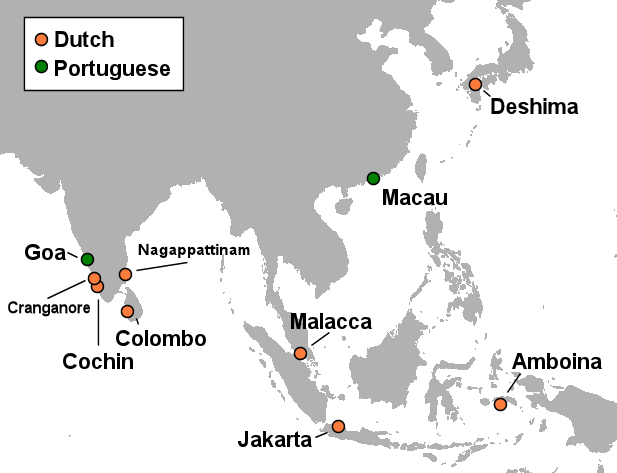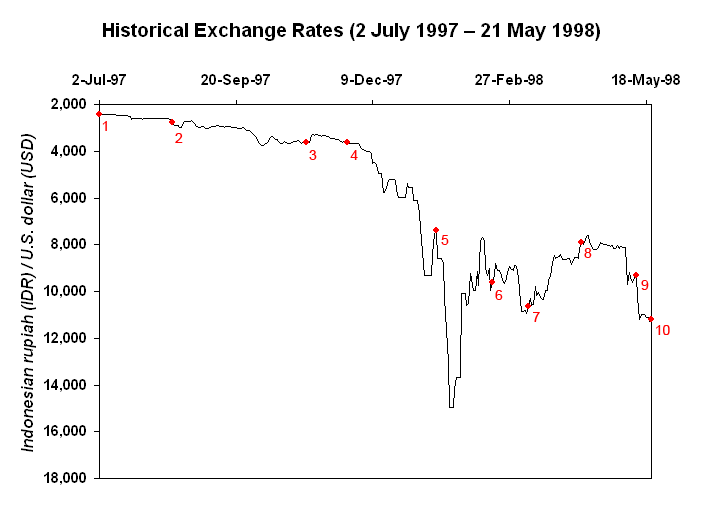|
Constitution Of Indonesia
The 1945 Constitution of the Unitary State of the Republic of Indonesia (, commonly abbreviated as ''UUD 1945'' or ''UUD '45'') is the supreme law and basis for all laws of Indonesia. The constitution was written in June–August 1945, in the final months of the Japanese occupation of the Dutch East Indies at the end of World War II. It was abrogated by the Federal Constitution of 1949 and the Provisional Constitution of 1950, but restored by President Sukarno's 1959 Decree. The 1945 Constitution sets forth the Pancasila, the five nationalist principles, as the embodiment of basic principles of an independent Indonesian state. It provides for a limited separation of executive, legislative, and judicial powers. The governmental system has been described as "presidential with parliamentary characteristics."King (2007) Following major upheavals in 1998 and the resignation of President Suharto, several political reforms were set in motion, via amendments to the Constitution, ... [...More Info...] [...Related Items...] OR: [Wikipedia] [Google] [Baidu] |
Probolinggo
Probolinggo (, , Javanese language, Javanese: ''Kuthå Pråbålinggå'') is a city on the north coast of East Java province, Indonesia. It covers an area of 56.676 sq. km, and had a population of 217,062 at the 2010 censusBiro Pusat Statistik, Jakarta, 2011. and 239,649 at the 2020 census;Badan Pusat Statistik, Jakarta, 2021. the official estimate as at mid 2023 was 246,980 (comprising 122,574 males and 124,406 females). Badan Pusat Statistik, Jakarta, 28 February 2024, ''Kota Probolinggo Dalam Angka 2024'' (Katalog-BPS 1102001.3574) It is surrounded on the landward side by Probolinggo Regency of which it was formerly the capital, but it is now not part of the regency. Like most of northern East Java, the city has a large Madurese people, Madurese population in addition to many ethnically Javanese people. It is located on one of the major highways across Java (island), Java, and has a harbor that is heavily used by fishing vessels. Under the Dutch East Indies colonial adm ... [...More Info...] [...Related Items...] OR: [Wikipedia] [Google] [Baidu] |
Japanese Occupation Of The Dutch East Indies
The Empire of Japan occupied the Dutch East Indies (now Indonesia) during World War II from March 1942 until after the end of the war in September 1945. In May 1940, Germany German invasion of the Netherlands, occupied the Netherlands, and martial law was declared in the Dutch East Indies. Following the failure of negotiations between the Dutch authorities and the Japanese, Japanese assets in the archipelago were frozen. The Dutch declared war on Japan following the 7 December 1941 attack on Pearl Harbor. The Japanese invasion of the Dutch East Indies began on 10 January 1942, and the Imperial Japanese Army overran the entire colony in less than three months. The Dutch surrendered on 8 March. Initially, most Indonesians welcomed the Japanese as liberators from their Dutch colonial masters. The sentiment changed, however, as between 4 and 10 million Indonesians were recruited as forced labourers (''romusha'') on economic development and defense projects in Java. Between 200 ... [...More Info...] [...Related Items...] OR: [Wikipedia] [Google] [Baidu] |
Vietnam
Vietnam, officially the Socialist Republic of Vietnam (SRV), is a country at the eastern edge of mainland Southeast Asia, with an area of about and a population of over 100 million, making it the world's List of countries and dependencies by population, fifteenth-most populous country. One of two communist states in Southeast Asia, Vietnam shares land borders with China to the north, and Laos and Cambodia to the west. It shares Maritime boundary, maritime borders with Thailand through the Gulf of Thailand, and the Philippines, Indonesia, and Malaysia through the South China Sea. Its capital is Hanoi and its largest city is Ho Chi Minh City. Vietnam was inhabited by the Paleolithic age, with states established in the first millennium BC on the Red River Delta in modern-day northern Vietnam. Before the Han dynasty's invasion, Vietnam was marked by a vibrant mix of religion, culture, and social norms. The Han dynasty annexed Northern and Central Vietnam, which were subs ... [...More Info...] [...Related Items...] OR: [Wikipedia] [Google] [Baidu] |
Saigon
Ho Chi Minh City (HCMC) ('','' TP.HCM; ), commonly known as Saigon (; ), is the most populous city in Vietnam with a population of around 14 million in 2025. The city's geography is defined by rivers and canals, of which the largest is Saigon River. As a Municipalities of Vietnam, municipality, Ho Chi Minh City consists of 16 List of urban districts of Vietnam, urban districts, five Huyện, rural districts, and one Municipal city (Vietnam), municipal city (sub-city). As the largest financial centre in Vietnam, Ho Chi Minh City has the largest gross regional domestic product out of all Vietnam provinces and municipalities, contributing around a quarter of the Economy of Vietnam, country's total GDP. Ho Chi Minh City metropolitan area, Ho Chi Minh City's metropolitan area is List of ASEAN country subdivisions by GDP, ASEAN's 5th largest economy, also the biggest outside an ASEAN country capital. The area was initially part of Cambodian states until it became part of the Vietna ... [...More Info...] [...Related Items...] OR: [Wikipedia] [Google] [Baidu] |
Southern Expeditionary Army Group
The was a general army of the Imperial Japanese Army during World War II. It was responsible for all military operations in South East Asian and South West Pacific campaigns of World War II. Its military symbol was NA. The Southern Expeditionary Army Group was formed on November 6, 1941, under the command of '' Gensui'' Count Terauchi Hisaichi, with orders to attack and occupy Allied territories and colonies in South East Asia and the South Pacific. Operational history The Philippines Plans for an invasion of the Philippines were finalized on November 13–15, by Lt General Masaharu Homma, Lt General Hideyoshi Obata, Vice Admiral Ibō Takahashi and Vice Admiral Nishizo Tsukahara. These plans called for air attacks against the Philippines, beginning on '' X-Day'', by the 5th Army Air Force Division and the 11th Naval Air Fleet. At this time, Imperial Japanese Army and Imperial Japanese Navy units were to land on Batan Island, Luzon (at Aparri, Cagayan, Vigan, ... [...More Info...] [...Related Items...] OR: [Wikipedia] [Google] [Baidu] |
Dutch Empire
The Dutch colonial empire () comprised overseas territories and trading posts under some form of Dutch control from the early 17th to late 20th centuries, including those initially administered by Dutch chartered companies—primarily the Dutch East India Company (1602–1799) and Dutch West India Company (1621–1792)—and subsequently governed by the Dutch Republic (1581–1795) and modern Kingdom of the Netherlands (1815–1975). Following the ''de facto'' independence of the Dutch Republic from the Spanish Empire in the late 16th century, various trading companies known as '' voorcompagnie'' led maritime expeditions overseas in search of commercial opportunities. By 1600, Dutch traders and mariners had penetrated the lucrative Asian spice trade but lacked the capital or manpower to secure or expand their ventures; this prompted the States General in 1602 to consolidate several trading enterprises into the semi-state-owned Dutch East India Company (, VOC), which was g ... [...More Info...] [...Related Items...] OR: [Wikipedia] [Google] [Baidu] |
Dutch East Indies
The Dutch East Indies, also known as the Netherlands East Indies (; ), was a Dutch Empire, Dutch colony with territory mostly comprising the modern state of Indonesia, which Proclamation of Indonesian Independence, declared independence on 17 August 1945. Following the Indonesian National Revolution, Indonesian War of Independence, Indonesia and the Netherlands Dutch–Indonesian Round Table Conference, made peace in 1949. In the Anglo-Dutch Treaty of 1824, the Dutch ceded the governorate of Dutch Malacca to Britain, leading to its eventual incorporation into Malacca, Malacca (state) of modern Malaysia. The Dutch East Indies was formed from the nationalised Factory (trading post), trading posts of the Dutch East India Company, which came under the administration of the Batavian Republic, Dutch government in 1800. During the 19th century, the Dutch fought Royal Netherlands East Indies Army, many wars against indigenous rulers and peoples, which caused hundreds of thousands of d ... [...More Info...] [...Related Items...] OR: [Wikipedia] [Google] [Baidu] |
Empire Of Japan
The Empire of Japan, also known as the Japanese Empire or Imperial Japan, was the Japanese nation state that existed from the Meiji Restoration on January 3, 1868, until the Constitution of Japan took effect on May 3, 1947. From Japan–Korea Treaty of 1910, 1910 to Japanese Instrument of Surrender, 1945, it included the Japanese archipelago, the Kuril Islands, Kurils, Karafuto Prefecture, Karafuto, Korea under Japanese rule, Korea, and Taiwan under Japanese rule, Taiwan. The South Seas Mandate and Foreign concessions in China#List of concessions, concessions such as the Kwantung Leased Territory were ''de jure'' not internal parts of the empire but dependent territories. In the closing stages of World War II, with Japan defeated alongside the rest of the Axis powers, the Japanese Instrument of Surrender, formalized surrender was issued on September 2, 1945, in compliance with the Potsdam Declaration of the Allies of World War II, Allies, and the empire's territory subsequent ... [...More Info...] [...Related Items...] OR: [Wikipedia] [Google] [Baidu] |
Fall Of Suharto
On 21 May 1998, Suharto resigned as president of Indonesia following protests and riots across the country against his regime. His vice president, B. J. Habibie, took over the presidency. Suharto's grip on power weakened following severe economic and political crises stemming from the 1997 Asian financial crisis. The economy suffered a flight of foreign capital, leading to a drastic drop in the value of the Indonesian rupiah, which severely impacted the economy and people's livelihoods. Suharto was re-elected to his seventh term by the People's Consultative Assembly in March 1998. Increasing political unrest and violence undermined his previously firm political and military support, leading to his May 1998 resignation. Initially under newly installed President Habibie, a period of political reform ('' Reformasi'') followed. Historical background Dissent during the New Order Having consolidated power in 1967 in the aftermath of the attempted coup in 1965 which wa ... [...More Info...] [...Related Items...] OR: [Wikipedia] [Google] [Baidu] |
May 1998 Riots Of Indonesia
The May 1998 Indonesia riots (), also known colloquially as the 1998 tragedy () or simply the 98 event (), were incidents of Riot, mass violence and civil unrest in Indonesia, many of which targeted the country's ethnic Chinese population. The events were mainly in the cities of Medan, Jakarta, and Surakarta, with smaller incidents in other parts of Indonesia. Under the Western-backed Suharto, there had been widespread and systematic discrimination against ethnic Chinese in Indonesia. The riots were triggered by corruption, economic problems, including food shortages and mass unemployment. It eventually led to the Fall of Suharto, resignation of President Suharto and the fall of the New Order (Indonesia), New Order government, which had been in power for 32 years and heavily backed by Western powers such as the United States. The main targets of the violence were Chinese Indonesian, ethnic Chinese Indonesians, but most of the casualties were caused by a massive fire and occurr ... [...More Info...] [...Related Items...] OR: [Wikipedia] [Google] [Baidu] |
Pancasila (politics)
''Pancasila'' () is the official, foundational philosophical theory of Indonesia. The name is made from two words originally derived from Sanskrit Sanskrit (; stem form ; nominal singular , ,) is a classical language belonging to the Indo-Aryan languages, Indo-Aryan branch of the Indo-European languages. It arose in northwest South Asia after its predecessor languages had Trans-cultural ...: "''pañca''" ("five") and "''śīla''" ("principles", "precepts"). It is composed of five principles: #''Ketuhanan yang Maha Esa'' (Belief in the one and only God) #''Kemanusiaan yang adil dan beradab'' (Just and civilized humanity) #''Persatuan Indonesia'' (The unity of Indonesia) #''Kerakyatan yang dipimpin oleh hikmat kebijaksanaan dalam permusyawaratan/perwakilan'' (Democracy guided by the inner wisdom in the unanimity arising out of deliberations among representatives) #''Keadilan sosial bagi seluruh rakyat Indonesia'' (Social justice for all the people of Indonesia) The legal ... [...More Info...] [...Related Items...] OR: [Wikipedia] [Google] [Baidu] |
President Sukarno's 1959 Decree
The Presidential Decree of 5 July 1959 (legally the Decree of the President of the Republic of Indonesia Number 150 of 1959 on the Return to the Constitution of 1945, ) was issued by President Sukarno Sukarno (6 June 1901 – 21 June 1970) was an Indonesian statesman, orator, revolutionary, and nationalist who was the first president of Indonesia, serving from 1945 to 1967. Sukarno was the leader of the Indonesian struggle for independenc ... in the face of the inability of the Constitutional Assembly of Indonesia to achieve the two-thirds majority to reimpose the 1945 Constitution. It was army chief of staff Abdul Haris Nasution who concluded that this would be the only way to bring about the reintroduction of a constitution that paved the way for the military to play a greater role in the running of the state, ushering in the period known as the " guided democracy" (1959–1966). The Decree The decree, which was read by Sukarno at the Merdeka Palace reads as follows ... [...More Info...] [...Related Items...] OR: [Wikipedia] [Google] [Baidu] |







